Vasily Demut-Malinovsky
Vasily Ivanovich Demut-Malinovsky was a Russian sculptor whose works represent the quintessence of the Empire style.
Vasily Demut-Malinovsky | |
|---|---|
| Василий Иванович Демут-Малиновский | |
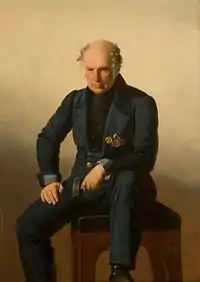 | |
| Born | March 2, 1778 |
| Died | July 16, 1846 (aged 68) Saint Petersburg, Russian Empire |
| Education | Member Academy of Arts (1807)[1] |
| Alma mater | Imperial Academy of Arts (1800)[1] |
| Known for | Sculpture |
| Awards | |
Biography
He entered the Imperial Academy of Arts at the age of six and studied under Mikhail Kozlovsky for fifteen years. Upon the death of his teacher, he won a competition to design his tomb and departed for Rome to study with Canova. Success came to him with two colossal statues for the Kazan Cathedral in St Petersburg.[1]
In the aftermath of the Russian victory over Napoleon, Demut-Malinovsky executed a number of patriotic pieces, including a tomb and a large statue of Barclay de Tolly in Estonia. Later Alexander I assigned to him the task of preparing bas-reliefs symbolizing the Neva and the Volga for the Alexander Column on Palace Square.
Demut-Malinovsky also designed statuary and decorations for other St Petersburg churches, palaces, and public monuments, especially those designed by Carlo Rossi: the General Staff Building, the Bourse, the Admiralty, the Mining Institute, the Egyptian Gate, the Narva Gate, and the Mikhailovsky Palace.
Works
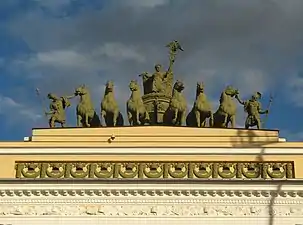 Sculptural composition on the arch of the General Staff Building
Sculptural composition on the arch of the General Staff Building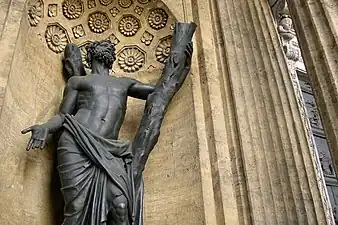
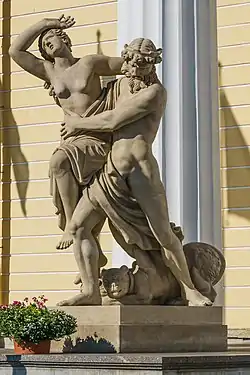 Abduction of Proserpine
Abduction of Proserpine_01_by_shakko.jpg.webp) Russian Scaevola
Russian Scaevola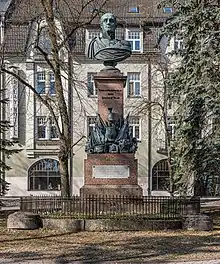 Monument to Barclay de Tolly (Tartu)
Monument to Barclay de Tolly (Tartu)_by_shakko_01.jpg.webp) Bust of Mikhail Muravyov
Bust of Mikhail Muravyov_by_shakko_01.jpg.webp) Bust of Alexander Suvorov
Bust of Alexander Suvorov
References
Bibliography
- С. Н. Кондаков (1915). Юбилейный справочник Императорской Академии художеств. 1764-1914 (in Russian). Vol. 2. p. 251.
External links
![]() Media related to Vasily Demut-Malinovsky at Wikimedia Commons
Media related to Vasily Demut-Malinovsky at Wikimedia Commons